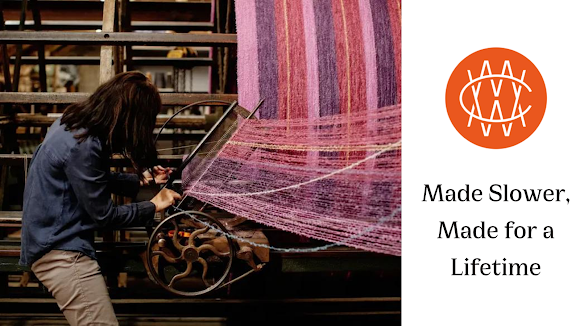Irish Wool, Mohair, and Lambswool: Comparing Nature’s Finest Fibers
Ireland has long been praised for its centuries-old textile traditions and verdant scenery. The natural fibers that have influenced its history—Irish wool, mohair, and lambswool—are at the core of these customs. These fibers are a tribute to the inventiveness of nature, each with its own tale, characteristics, and applications. This essay explores the qualities, advantages, and uses of these remarkable fibers, enabling you to recognize the skill and attention to detail that goes into each thread.
1. Irish Wool: The Heritage Fiber
Characteristics
The rough beauty of Ireland's countryside is reflected in Irish wool, which is mostly derived from indigenous sheep breeds like the Galway sheep. Centuries of sheep enduring Ireland's rainy climate have cultivated the tough and naturally water-resistant qualities of Irish wool, which is renowned for its coarse texture.- Texture: More durable and coarser than mohair and lambswool.
- Color: Usually available in organic hues like brown, cream, and grey.
- Durability: Exceptionally strong, perfect for demanding applications.
Uses
Traditional blankets, jackets, and sweaters are made using Irish wool. It is ideal for making clothing that endures inclement weather because of its warmth and gritty texture. Because of its durability, it is also frequently used in rugs and upholstery.Benefits
- Warmth: Offers superior protection from chilly temperatures.
- Sustainability: Made locally with little harm to the environment.
- Cultural Heritage: Purchasing Irish wool helps sustain traditional crafts and local farmers.
2. Mohair: The Luxurious Fiber
Characteristics
The fleece of Angora goats, a breed known for its silky, lustrous wool, is the source of mohair. Mohair is not indigenous to Ireland, but it has gained popularity among Irish craftspeople who cherish its distinct softness and gloss.- Texture: Smooth and silky, with a glossy appearance.
- Elasticity: Extremely durable and less likely to wrinkle.
- Color: Creates vivid and long-lasting hues by absorbing dye remarkably well.
Uses
Mohair is frequently saved for upscale fashion pieces like fitted coats, shawls, and scarves. It is popular in both winter and summer collections because of its light yet insulating qualities. Mohair is also a popular choice for upholstery and throws fabrics in home décor.Benefits
- Softness and Shine: Provides an opulent texture that no other material can match.
- Versatility: Fit for a variety of seasons and climates.
- Durability: Mohair is incredibly robust, despite its fragile appearance.
3. Lambswool: The Gentle Fiber
Characteristics
Harvested from a sheep's first shearing, lambswool is hypoallergenic, soft, and fine. It is frequently regarded as the best choice for people who appreciate warmth and comfort without the itching that wool may occasionally cause.- Texture: really smooth and kind to the skin.
- Fiber Diameter: Perfect for next-to-skin clothing, it is finer than Irish wool.
- Elasticity: Perfect for tailored clothing, it maintains its shape nicely.
Uses
A popular fabric for warm sweaters, scarves, and infant clothes is lambswool. It is perfect for clothing that needs to be both comfortable and insulating because of its softness and lightweight nature. Due to its breathability, it is also utilized in luxurious bedding, including blankets and duvets.Benefits
- Comfort: Ideal for delicate skin and non-irritating.
- Thermal regulation keeps you cool in the summer and toasty in the winter.
- Sustainability: renewable and biodegradable.
Comparing the Fibers
Which Fiber Should You Choose?
The intended application and individual preference play a major role in the decision between lambswool, mohair, and Irish wool:- For Durability: Irish wool is unparalleled in its strength and tenacity, which makes it perfect for traditional handicrafts and rough use.
- For Luxury: Mohair is the best option if softness and elegance are top concerns.
- For Comfort: Lambswool is the go-to option for garments and products that prioritize comfort and warmth.
The Legacy of Irish Wool Craftsmanship
More than just a useful sector, Ireland's wool-producing heritage is a generation-spanning cultural custom. Blankets and jumpers made from materials like Irish wool serve as a link to the island's rich past and the ingenuity of its inhabitants. These fibers are more important than ever in the modern era due to the increased emphasis on sustainability and history.In addition to embracing the best natural materials, selecting Irish wool, mohair, or lambswool also supports regional craftspeople and environmentally responsible methods. Every fiber has a backstory that adds to its beauty and functionality, whether you like the soft comfort of lambswool, the smooth elegance of mohair, or the rugged charm of Irish wool.
Thus, keep in mind the care, tradition, and environment that gave these fibers life the next time you wrap yourself in a warm Irish wool jumper or drape an opulent mohair scarf around your shoulders. They are more than just materials; they are evidence of Ireland's long-standing ties to its homeland.

.png)
.png)

Comments
Post a Comment